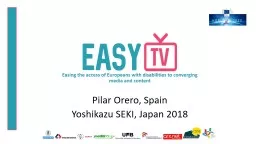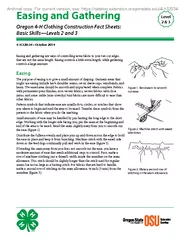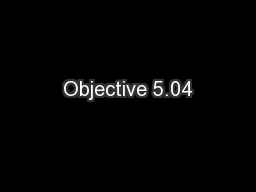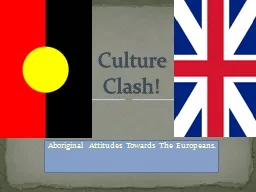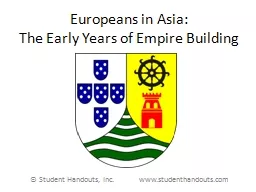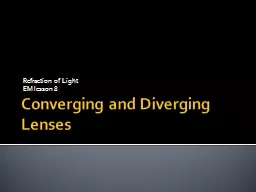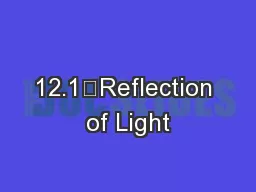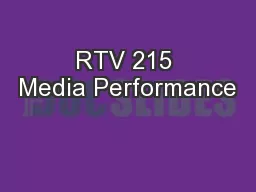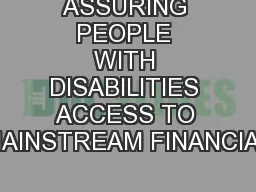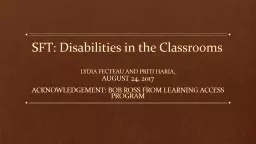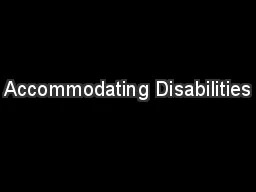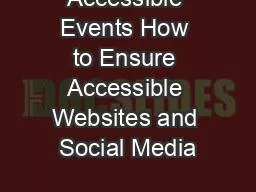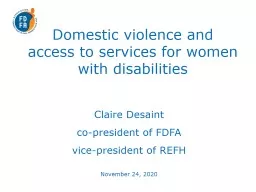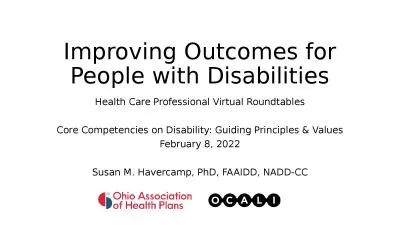PPT-Easing the access of Europeans with disabilities to converging media and content
Author : cozync | Published Date : 2020-08-06
Pilar Orero Spain Yoshikazu SEKI Japan 2018 Content Introduction Objetive Services Suggested contributions for Revision of ISOIEC 24786 Accessible user interface
Presentation Embed Code
Download Presentation
Download Presentation The PPT/PDF document "Easing the access of Europeans with disa..." is the property of its rightful owner. Permission is granted to download and print the materials on this website for personal, non-commercial use only, and to display it on your personal computer provided you do not modify the materials and that you retain all copyright notices contained in the materials. By downloading content from our website, you accept the terms of this agreement.
Easing the access of Europeans with disabilities to converging media and content: Transcript
Download Rules Of Document
"Easing the access of Europeans with disabilities to converging media and content"The content belongs to its owner. You may download and print it for personal use, without modification, and keep all copyright notices. By downloading, you agree to these terms.
Related Documents

